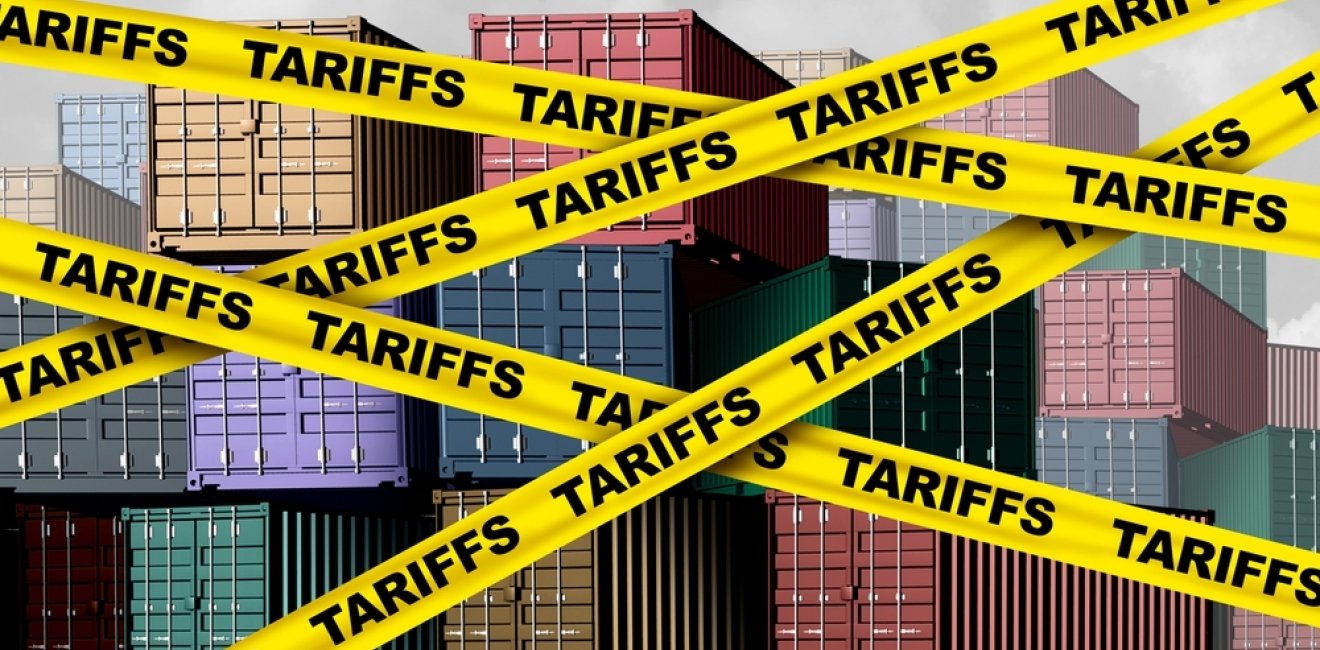
Todd Epp, Northern Plains News LLC
In the first 100 days of President Donald Trump’s second term, new tariffs have caused South Dakota families to pay more for food, farm inputs, and consumer goods.
Federal budget actions are also forcing cuts and closures at libraries, arts programs, public broadcasting, and even federal recreation areas.
Trump’s March tariffs on Canada, Mexico, and China, South Dakota’s top trading partners, have made imported goods, fertilizer, and equipment more expensive. This is squeezing farm profits and raising grocery and goods prices.
Meanwhile, federal budget actions have already forced the South Dakota State Library to suspend its interlibrary loan courier service and threaten funding for local arts, humanities, public broadcasting, and recreation sites.
These changes hit hardest in rural and small-town South Dakota, where local funding is limited and federal dollars make a difference.
Tariffs and Trade: Direct Impact on Food, Goods, and Farm Inputs
On March 4, Trump imposed 25 percent tariffs on most imports from Canada and Mexico and 10 percent on goods from China, according to the U.S. Department of Agriculture and the Office of the U.S. Trade Representative.
Canada, Mexico, and China buy more than $5 billion in South Dakota farm exports each year and supply much of the state’s fertilizer, machinery, and consumer goods.
The U.S. International Trade Commission found that between late January and early May 2025, the average price of imported food and consumer goods in the Midwest rose 2.3 percent, with the sharpest increases in dairy, cereal, and processed foods.
The American Farm Bureau Federation reports that tariffs on Canadian fertilizer and machinery have increased farm input costs by as much as 11 percent since March.
The Trade Partnership, a nonpartisan economic research group, estimates the average South Dakota household will lose between $900 and $2,300 in annual buying power this year due to the combined effect of tariffs and foreign retaliation.
The Federal Reserve’s April 2025 Beige Book for the Minneapolis District, which includes South Dakota, reports that more than a third of regional firms raised prices for customers in March, while over half reported higher input costs.
Manufacturers and construction firms specifically cited rising prices for steel, aluminum, and other raw materials in anticipation of tariffs. Retailers and wholesalers reported passing some of these costs on to consumers.
Food and Grocery Prices: The Cost at Checkout
The U.S. Bureau of Labor Statistics Consumer Price Index for the Midwest shows that from February to April 2025:
- Food prices rose 2.8 percent.
- “Food at home” (groceries) increased 2.3 percent.
- Meats, poultry, fish, and eggs jumped 6.9 percent.
- Dairy rose 2 percent.
- Cereals and bakery products climbed 1.8 percent.
These increases are above the national average for the same period, reflecting the region’s exposure to new tariffs and supply chain disruptions.
Utilities: Local and Regional Factors Drive Costs
South Dakotans are paying more for electricity and natural gas this spring, but the cause is not Trump’s energy policy. Sioux Valley Energy, a major rural electric cooperative, raised rates by 4.9 percent in January. The co-op attributed the increase to higher wholesale power costs, inflation, and materials, not federal action. Drought in the Missouri River Basin has also driven up hydropower costs, forcing utilities to buy more expensive power on the open market.
Libraries: Interlibrary Loan Suspended Amid Federal Funding Uncertainty
In April, the South Dakota State Library suspended its statewide interlibrary loan courier service due to uncertainty over federal funding from the Institute of Museum and Library Services (IMLS), according to the South Dakota State Library and Department of Education.
About 70 percent of libraries in South Dakota use the courier service to share books and materials. Without it, libraries must now pay to ship books by mail, about $5 each way, a cost many small libraries cannot afford.
Elizabeth Fox, president of the South Dakota Library Association, said, “Each library will need to decide how to address this situation,” according to the South Dakota State Library and Department of Education.
Arts, Public Broadcasting, and Recreation: Federal Cuts and Closures
According to federal budget documents and agency statements, Trump’s proposed budget eliminates or slashes funding for the National Endowment for the Arts (NEA), National Endowment for the Humanities (NEH), Corporation for Public Broadcasting (CPB), and IMLS.
- South Dakota Public Broadcasting: CPB provides about 20 percent of SDPB’s annual budget. Loss of this funding would threaten local news, educational programming, and emergency alerting in rural areas.
- Arts and Humanities: NEA and NEH grants support museums, cultural organizations, and community arts programs statewide. The National Humanities Alliance and the South Dakota Arts Council warn that eliminating these agencies would directly harm local arts, museums, and libraries and reduce access to cultural and educational programming.
- Recreation Areas: The U.S. Army Corps of Engineers announced in April that it will temporarily close or reduce services at recreation areas along the Missouri River in South Dakota beginning May 1, 2025, due to staffing shortages and budget constraints. Visitor centers at Oahe and Fort Randall dams are closed for the season, powerhouse tours are suspended, and several campgrounds and day-use sites have reduced amenities and janitorial services. The Corps said these cutbacks are necessary to protect safety and hydropower operations while managing limited federal resources (U.S. Army Corps of Engineers Omaha District).
Why Should Readers Care?
Tariffs are raising prices for groceries, farm inputs, and basic goods, shrinking family budgets. Federal cuts have already suspended statewide library services and threaten local news, emergency alerts, arts programs, and even outdoor recreation, especially in rural and tribal communities that rely most on federal support. Without this funding, South Dakota families, students, and communities will have fewer opportunities to learn, connect, recreate, and participate in civic life.
